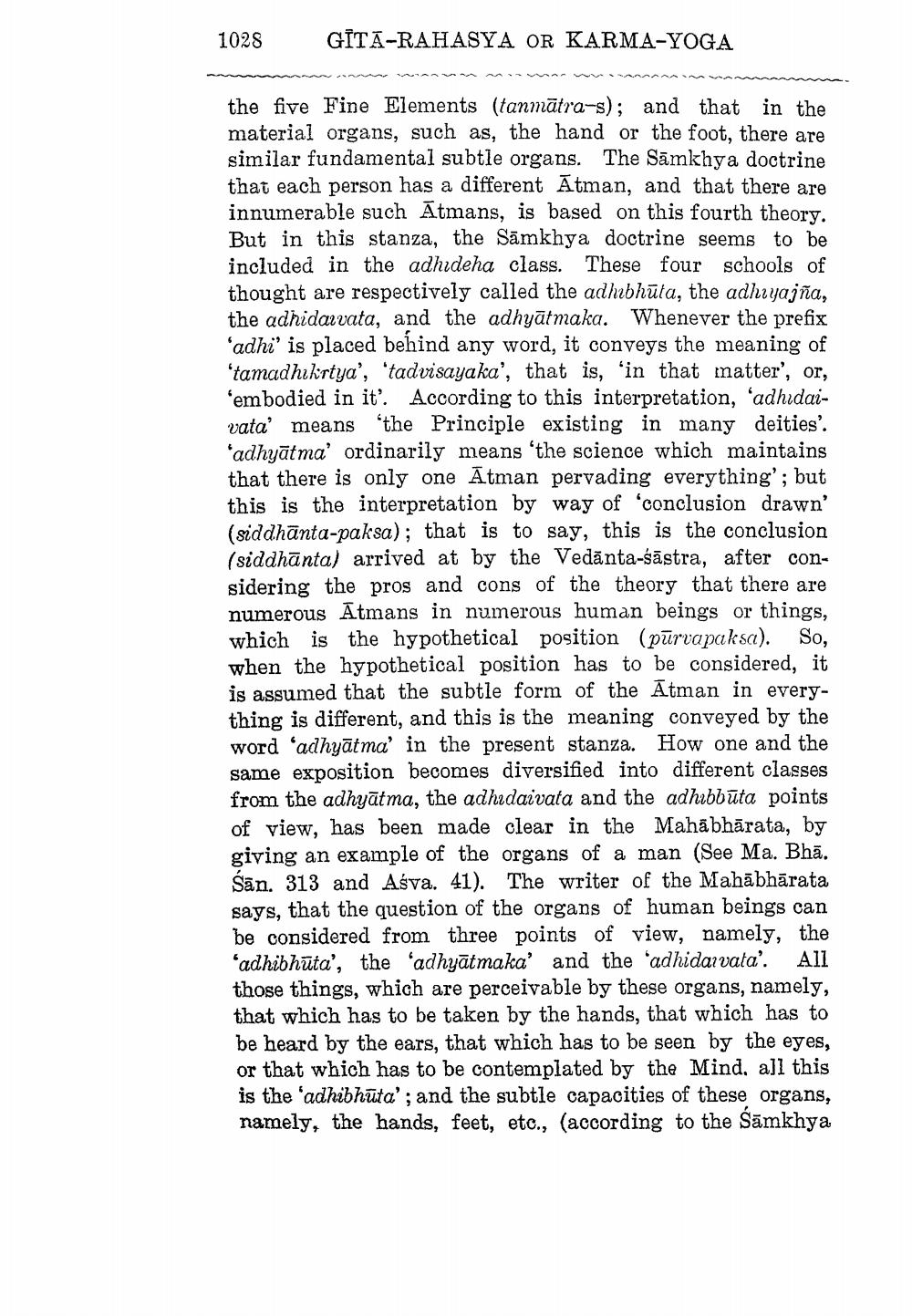________________
1028
GITA-RAHASYA OR KARMA-YOGA
the five Fine Elements (tanmatra-s); and that in the material organs, such as, the hand or the foot, there are similar fundamental subtle organs. The Samkhya doctrine that each person has a different Atman, and that there are innumerable such Atmans, is based on this fourth theory. But in this stanza, the Samkhya doctrine seems to be included in the adhideha class. These four schools of thought are respectively called the adhibhuta, the adhiyajña, the adhidarvata, and the adhyatmaka. Whenever the prefix 'adhi' is placed behind any word, it conveys the meaning of 'tamadhikrtya', 'tadvisayaka', that is, 'in that matter', or, 'embodied in it'. According to this interpretation, 'adhidaivata' means 'the Principle existing in many deities'. 'adhyatma' ordinarily means 'the science which maintains that there is only one Atman pervading everything'; but this is the interpretation by way of 'conclusion drawn' (siddhanta-paksa); that is to say, this is the conclusion (siddhanta) arrived at by the Vedanta-sastra, after considering the pros and cons of the theory that there are numerous Atmans in numerous human beings or things, which is the hypothetical position (purvapaksa). So, when the hypothetical position has to be considered, it is assumed that the subtle form of the Atman in everything is different, and this is the meaning conveyed by the word 'adhyatma' in the present stanza. How one and the same exposition becomes diversified into different classes from the adhyatma, the adhidaivata and the adhibbuta points of view, has been made clear in the Mahabharata, by giving an example of the organs of a man (See Ma. Bhā. San. 313 and Asva. 41). The writer of the Mahabharata says, that the question of the organs of human beings can be considered from three points of view, namely, the 'adhibhuta', the 'adhyatmaka' and the 'adhidarvata". All those things, which are perceivable by these organs, namely, that which has to be taken by the hands, that which has to be heard by the ears, that which has to be seen by the eyes, or that which has to be contemplated by the Mind. all this is the 'adhibhuta'; and the subtle capacities of these organs, namely, the hands, feet, etc., (according to the Samkhya




